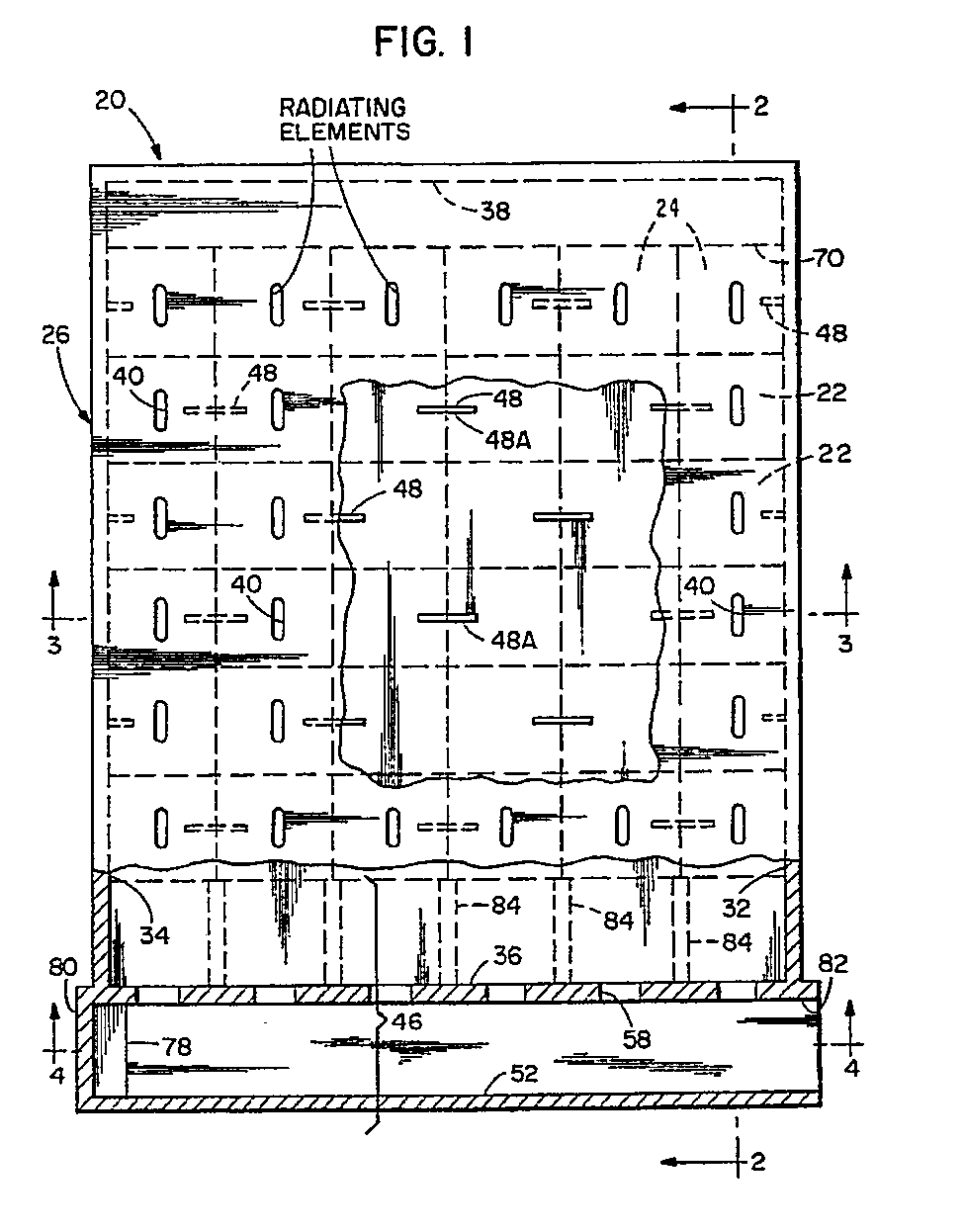(57) An array antenna (20) that avoids the generation of grating lobes or second order
beams is formed of a two-dimensional array of radiating elements (40) disposed in
parallel rows (22) and parallel columns (24), each of the radiating elements being
formed as slotted apertures within a top broad wall (28) of a waveguide (26). The
width of the broad wall is many times greater than the height of a sidewall (32, 34)
of the waveguide, the waveguide having a rectangular cross section. A wave launcher
(46) connected to a first end of the waveguide launches a higher-order mode of electromagnetic
wave wherein the order of the mode is equal to the number of columns of the radiating
elements. A set of vanes (48, 48A) upstanding from a bottom wall (30) of the waveguide
extend partway towards the top wall to provide values of inductance and capacitance
which resonate at the resonant frequency to inhibit reflection of the electromagnetic
wave from individual ones of the vanes. Each vane extends in a plane perpendicular
to the sidewalls, individual planes of the vanes bisecting slots (40) of the radiating
elements, the slots being arranged parallel to the sidewalls. In each column, the
locations of vanes are staggered from side to side so as to offset a path of propagation
of the wave in the vicinity of the radiating element to reverse a sense of coupling
of electromagnetic power from the wave to the radiating element. This produces a uniform
phase front from radiations from all of the radiating elements.
|

|
